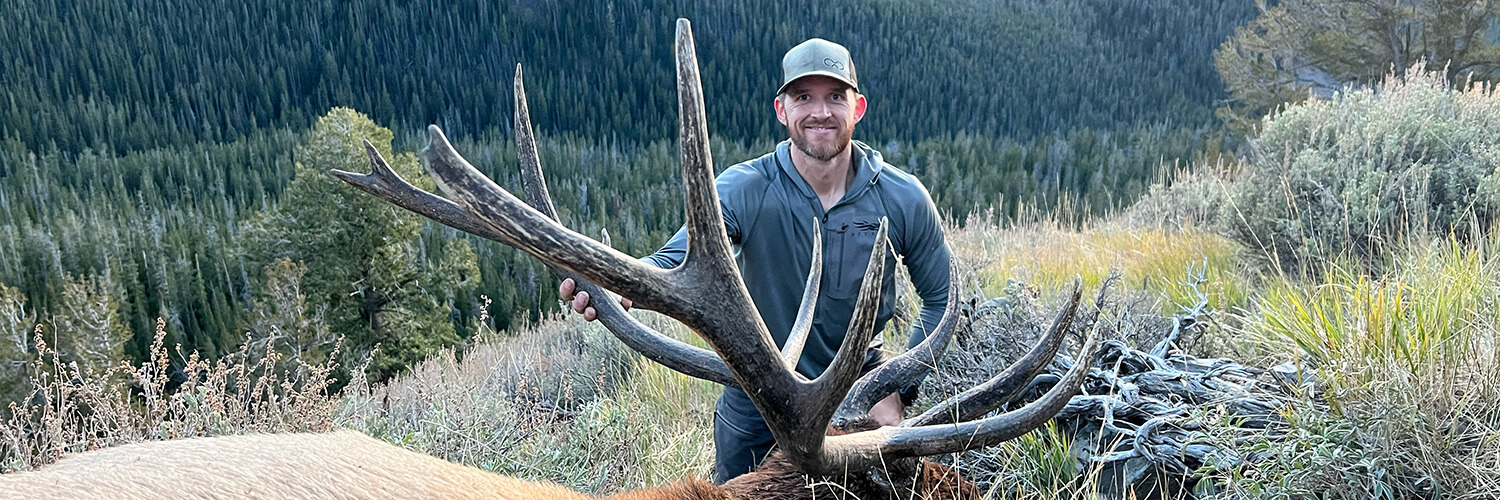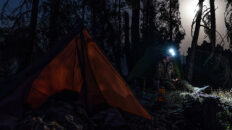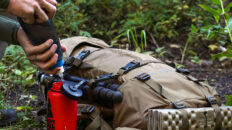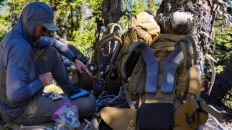This is the second half of a conversation that explores how bullets kill and why smaller calibers may be better for big game hunting. Be sure to listen to Part 1 of this conversation before listening to the second half of this conversation here. (And after you listen to Part 2, check out a follow-up Q&A with Form here.)
Listen Now — Hit play in the header above, access the podcast on Spotify, or download the episode from SoundCloud.
Header Photo: Exo’s, Mark Huelsing, with an elk he shot in 2023
Key Concepts
- How smaller/lighter bullets kill effectively, and why “what” creates a wound channel doesn’t matter
- The amount of penetration required to kill big game animals is less than most hunters think it is
- How tissue stretches (temporarily) or tears (permanently) as part of the wound channel, and how that temporary/permanent damage is tied to velocity
- The terminal performance of solid copper bullets and the characteristics of the wound channel created by those bullets
- The terminal performance of ELD-X / ELD-M style bullets and the characteristics of the wound channel created by those bullets
- The terminal performance VLD style bullets and the characteristics of the wound channel created by those bullets
- The relationship between impact velocity and bullet expansion/upset and if a bullet manufacturer’s published “minimum expansion velocity” is a helpful guideline
- The expansion characteristics of a bullet are not consistent even if the impact velocity is the same from shot to shot
- Why it is required to “choke down” larger caliber rifles to avoid creating too much damage, and how that has influenced “tough” bullet design
- How to maximize the lethality of lower-recoiling (aka “smaller caliber”) rifles and why that approach is beneficial for hunters
- The fundamental deception of how we measure our accuracy as shooters, especially as we move from the shooting bench to the mountain
- The terminal difference between Steve’s 6mm Creedmoor and Mark’s 7SAUM on big game at 600 yards
- Will a 6mm 103-grain ELD-X kill better than a 7mm 160-grain monolithic bullet, and what are the differences in the wound channel created by those two bullets
- How (and why) Form started killing big game with .223 / .556 and what he learned about bullets and terminal ballistics in the process
- The difference between emotion and experience when it comes to choices in rifles, calibers, bullets, etc
- Why there is a misleading mystique about shooting elk and how that influences what gun writers and the outdoor media say is “needed” to kill elk
- There is a reason to hunt with big magnum cartridges, but there is rarely a “need” to hunt with them
- When, and why, to consider choosing a bullet that creates less damage, even though it could result in a slower death and/or longer recovery for the animal
- Why an ELD-X is “an easy answer” for a good hunting bullet, but why the ELD-X isn’t Form’s favorite bullet
- Why “heavy for caliber” bullets are best, unless you are shooting all-copper monolithic bullets
- Why a slower impact velocity results in more penetration, in most cases, at most hunting distances
- How a 600-yard rifle shot is similar to a 60-yard archery shot, and how many hunters should take either shot
Additional Resources
- Part 1 of this podcast
- “.223 for bear, mountain goat, deer, elk, and moose” thread on Rokslide. Warning: this is a very graphic thread with many photo examples of wound channels on big game animals.
- Additional podcasts from “Form” on the Shoot2Hunt Podcast
Have Questions?
We will be doing Q&A in future podcasts and videos, so let us know if you have a question that we should consider discussing.
Note: We include this podcast in both The Gear and The Hunter categories, as it covers the mindset of the hunter, as well as the gear that the hunter chooses to use.







